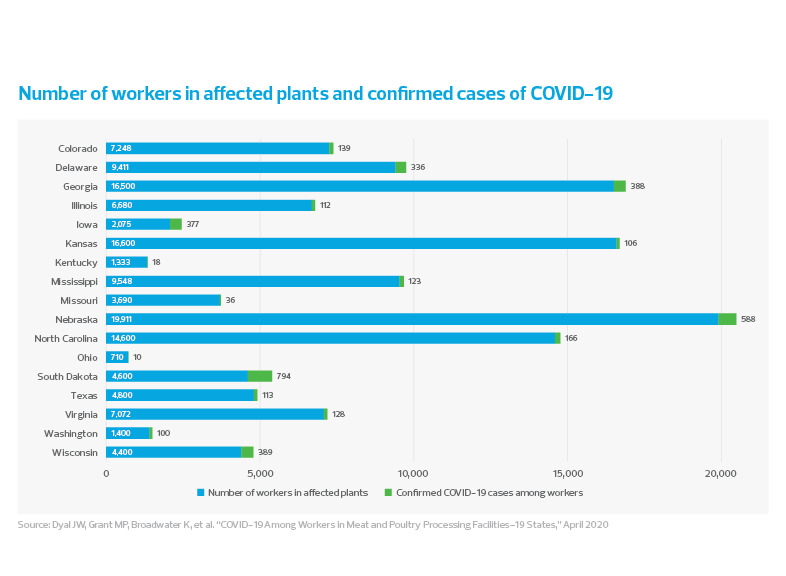As we begin a global economic recession, food and beverage is projected to be the only consumer products sector to have growth in 2020, according to Euromonitor. This unprecedented time of record unemployment and pandemic conditions will shape consumer spending and put pressure on food manufacturers and distributors already operating on thin margins. Supply and demand disruption and rising operating and transportation costs will translate into higher prices. As companies continue to manage through the crisis and plan on the road ahead, it will take resilience, innovation and transparency to succeed.
Heading back to center
The pandemic caused consumers to head to the center of the grocery store to stock up on shelf staples like canned and frozen foods. As shelter-in-place rules were announced, there was great uncertainty and shoppers were concerned about everything from contagion to food shortages. Stocking up was something they could control during an uncontrollable situation. Shopping the center of the store could last for a few reasons.
When shoppers turned to e-commerce for their groceries, many websites featured recipes using canned and frozen foods. Consumers are discovering healthy recipes using items such rice, beans and tuna. They also opted for frozen fruits and vegetables when fresh alternatives were not available. According to a survey from the American Frozen Food Institute, frozen food purchases increased 70%. The center aisles also offer healthy quick scratch cooking ingredients that meet consumer preferences for both healthy and convenient meals. Finally, the center of the store often offers value with store branded items for the cost-conscious consumer. Center of store brands should focus on retaining this new connection with the consumer and develop digital strategies to stay top of mind whether the consumer shops brick and mortar or online.
Food and immunity
“Let food be thy medicine and medicine be thy food” – Hippocrates.
During the pandemic we have seen the healthy food trend evolve. Consumers eat healthy to lose weight, increase energy and sleep better. Now they are looking for ingredients that boost immunity and prevent illness. Shelter in place and reduced discretionary income caused more people to cook from home, finding it easier to eat healthy. As unemployment grows, so does the loss of medical benefits and consumers are motivated to stay healthy and avoid expensive trips to the doctor.
Consumers continue to consider plant-based products as healthy, however it may be difficult for some manufacturers to pivot. Many smaller plant based manufacturers focused primarily on restaurants and may not have a distribution channel to retail in place. Many consumers may choose to eat plant based proteins considering potential future meat shortages and higher prices. To be successful, manufacturers will need to get control of their supply chains and distribution channels and use predictive analytics to be prepared for potential future disruptions.
Meat concerns
As consumers were stockpiling groceries, food manufacturers of all types were running multiple shifts to keep up with demand. Food processors have strict guidelines to keep food safe, however, the pandemic shone an unfavorable light on the meat and poultry processing industry. In early April of 2020, the U.S. Center for Disease Control was alerted to several cases of plant workers testing positive for COVID-19. After a month-long investigation, the CDC found 4,913 cases of COVID-19 and 20 deaths reported from 115 plants in 19 states.


